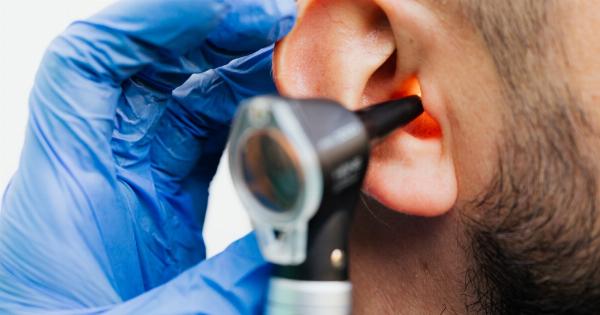Earwax, also known as cerumen, is a natural substance produced by the ear glands to lubricate and protect the ear canal. While most people find it bothersome, earwax plays a crucial role in maintaining ear health.
It helps to trap dust, dirt, and foreign particles, preventing them from entering the delicate parts of the ear. However, the color of your earwax can reveal valuable information about your overall health. Let’s explore what different earwax colors might indicate and when it’s necessary to seek medical attention.
Normal Earwax Colors
In its natural state, earwax is typically a light yellow to amber color. This hue indicates that your body is producing a healthy amount of wax and it’s functioning as it should.
It’s important to note that the texture of earwax can vary from person to person, ranging from dry and crumbly to moist and sticky. These variations are normal and not cause for concern.
Light-colored or White Earwax
If you notice your earwax is lighter in color than usual or appears white, it may be an indication of a lack of earwax. This can be caused by aging, excessive cleaning of the ears, or a rare genetic disorder known as keratosis obturans.
Without adequate earwax, your ear can become dry and itchy, leading to discomfort or even infections. It is advisable to consult with an ear specialist to determine the underlying cause and appropriate treatment if necessary.
Dark Brown or Black Earwax
While not entirely uncommon, dark brown or black earwax may raise concerns. In most cases, this darker color indicates a higher production of earwax or a buildup due to poor cleaning habits.
However, it can also be a sign of an ear infection or an overgrowth of fungi or bacteria in the ear canal. If you experience pain, itchiness, or changes in your hearing along with dark brown or black earwax, it’s essential to consult a healthcare professional for a proper examination and guidance for treatment.
Yellow or Green Earwax
A yellowish or greenish tinge to your earwax can indicate the presence of pus or a bacterial infection. These colors are often associated with middle ear infections or external ear canal infections (otitis media and otitis externa, respectively).
These infections can be quite painful and may require medical intervention. It is important not to attempt to remove the earwax yourself, as this may worsen the situation or lead to injury. Seek medical attention from a qualified healthcare provider to address the underlying infection and receive appropriate treatment.
Bloody or Red Earwax
Finding blood in your earwax can be alarming, but it’s not always a cause for panic. It can be a result of minor injuries to your ear canal, such as using a cotton swab or any other objects to clean your ears.
However, if you notice consistent or unexplained bleeding from your ear, it may be an indication of a more serious condition, such as a perforated eardrum, ear canal injury, or an infection. Consult an ear specialist immediately to determine the cause and receive suitable treatment.
Earwax Removal
Regardless of the color of your earwax, it’s crucial to refrain from using cotton swabs or other objects to clean your ears. These can push the wax further into the ear canal, resulting in blockages or damage to your ear.
Instead, let your body’s natural processes take care of removing excess earwax. If you experience discomfort or a blockage due to an excessive buildup of wax, it is advisable to seek professional assistance.
Ear specialists can safely remove the wax using tools and techniques that will not harm your ears, ensuring your hearing health is protected.
When to Seek Medical Advice
While earwax color can provide some insights into your ear health, it is not always a reliable indicator of more severe issues. However, if you experience any of the following symptoms, it is recommended to consult with a healthcare professional:.
- Severe pain or discomfort in your ear
- Sudden or gradual hearing loss
- Ringing or buzzing sounds in your ear (tinnitus)
- Persistent itching or irritation
- Ear drainage or a foul odor
These symptoms may signal an underlying condition that requires medical attention and appropriate treatment.
Preventing Earwax Buildup
To maintain good ear health and prevent excessive earwax buildup, consider the following tips:.
- Avoid inserting any objects into your ears, such as cotton swabs or bobby pins.
- Keep your ears dry and avoid exposing them to excessive moisture.
- If you wear hearing aids or earplugs, ensure they are cleaned regularly.
- Consider using over-the-counter ear drops to aid in the natural breakdown and removal of earwax.
- Regularly see an ear specialist, who can monitor your ear health and perform necessary cleanings if required.
By adopting these preventative measures, you can help reduce the risk of earwax blockages and associated complications.
Conclusion
Understanding the color of your earwax can provide valuable information about your ear health. While it is normal for earwax to vary in color and consistency, certain colors may indicate underlying health issues.
Light-colored or white earwax can be a sign of a lack of earwax, while dark brown or black earwax might suggest an infection or poor cleaning habits. Yellow or green earwax may indicate pus or a bacterial infection, and bloody or red earwax can indicate an injury or infection.
If you experience any concerning symptoms or are unsure about the color of your earwax, it is advisable to seek medical advice promptly. Remember, it’s important to avoid attempting to clean your ears with cotton swabs or other objects, as this can worsen the situation or cause damage. Prioritize your ear health and consult professionals when needed.





























